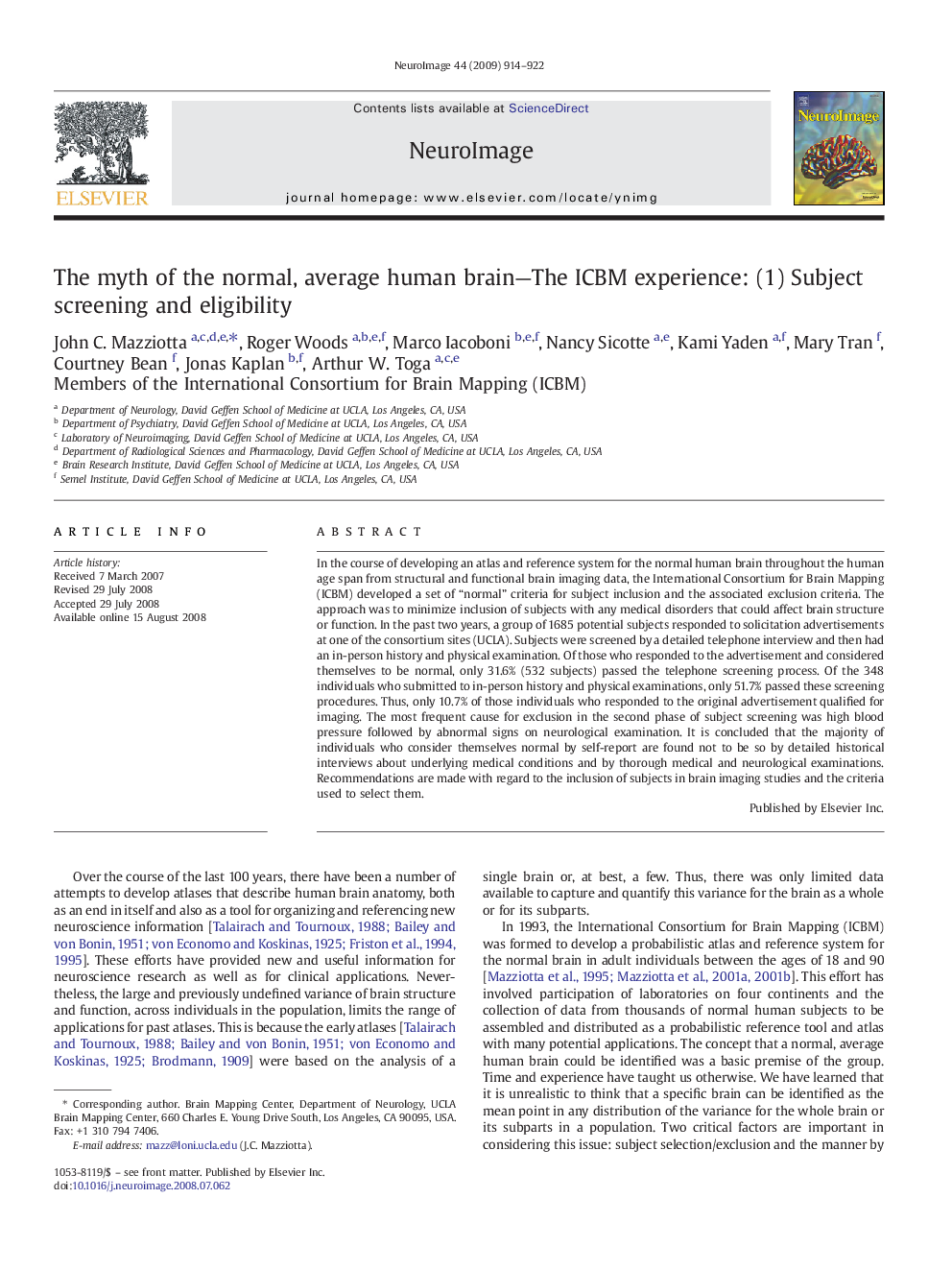| Article ID | Journal | Published Year | Pages | File Type |
|---|---|---|---|---|
| 6038366 | NeuroImage | 2009 | 9 Pages |
In the course of developing an atlas and reference system for the normal human brain throughout the human age span from structural and functional brain imaging data, the International Consortium for Brain Mapping (ICBM) developed a set of “normal” criteria for subject inclusion and the associated exclusion criteria. The approach was to minimize inclusion of subjects with any medical disorders that could affect brain structure or function. In the past two years, a group of 1685 potential subjects responded to solicitation advertisements at one of the consortium sites (UCLA). Subjects were screened by a detailed telephone interview and then had an in-person history and physical examination. Of those who responded to the advertisement and considered themselves to be normal, only 31.6% (532 subjects) passed the telephone screening process. Of the 348 individuals who submitted to in-person history and physical examinations, only 51.7% passed these screening procedures. Thus, only 10.7% of those individuals who responded to the original advertisement qualified for imaging. The most frequent cause for exclusion in the second phase of subject screening was high blood pressure followed by abnormal signs on neurological examination. It is concluded that the majority of individuals who consider themselves normal by self-report are found not to be so by detailed historical interviews about underlying medical conditions and by thorough medical and neurological examinations. Recommendations are made with regard to the inclusion of subjects in brain imaging studies and the criteria used to select them.
